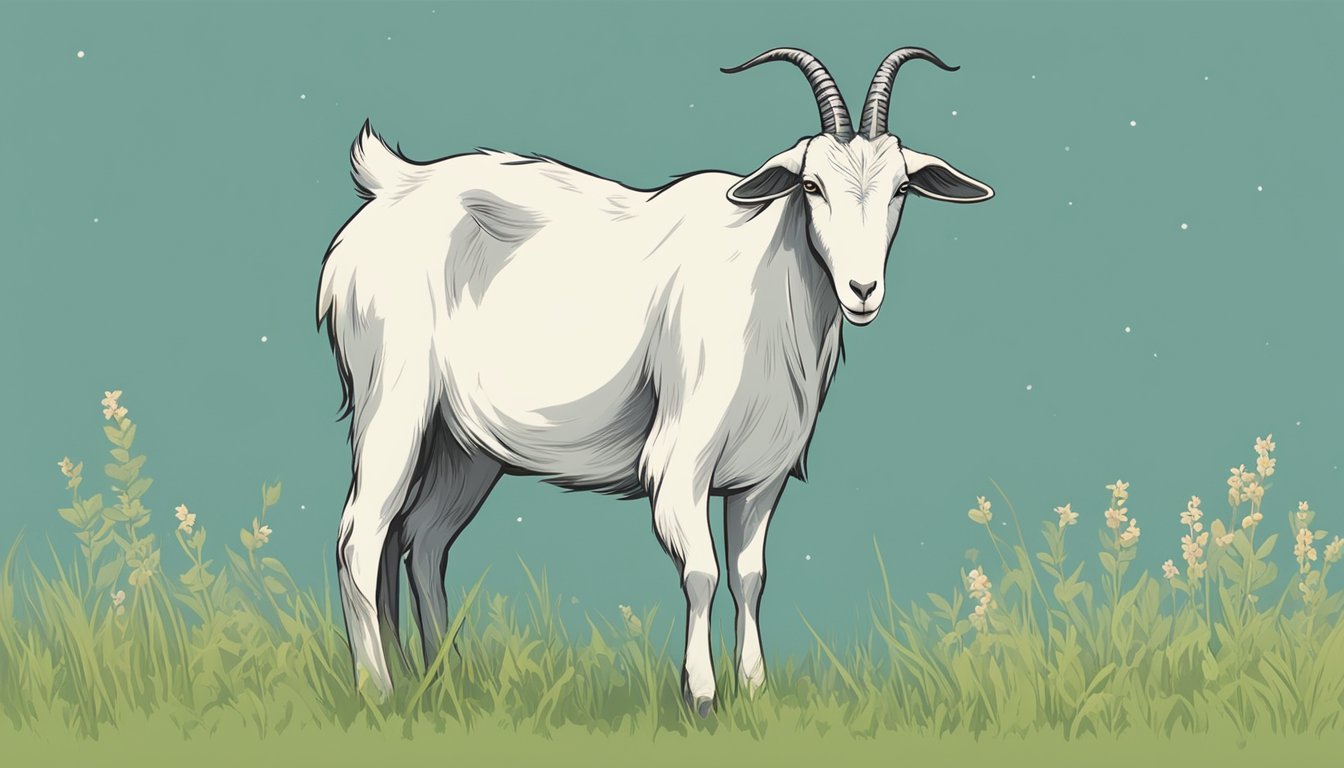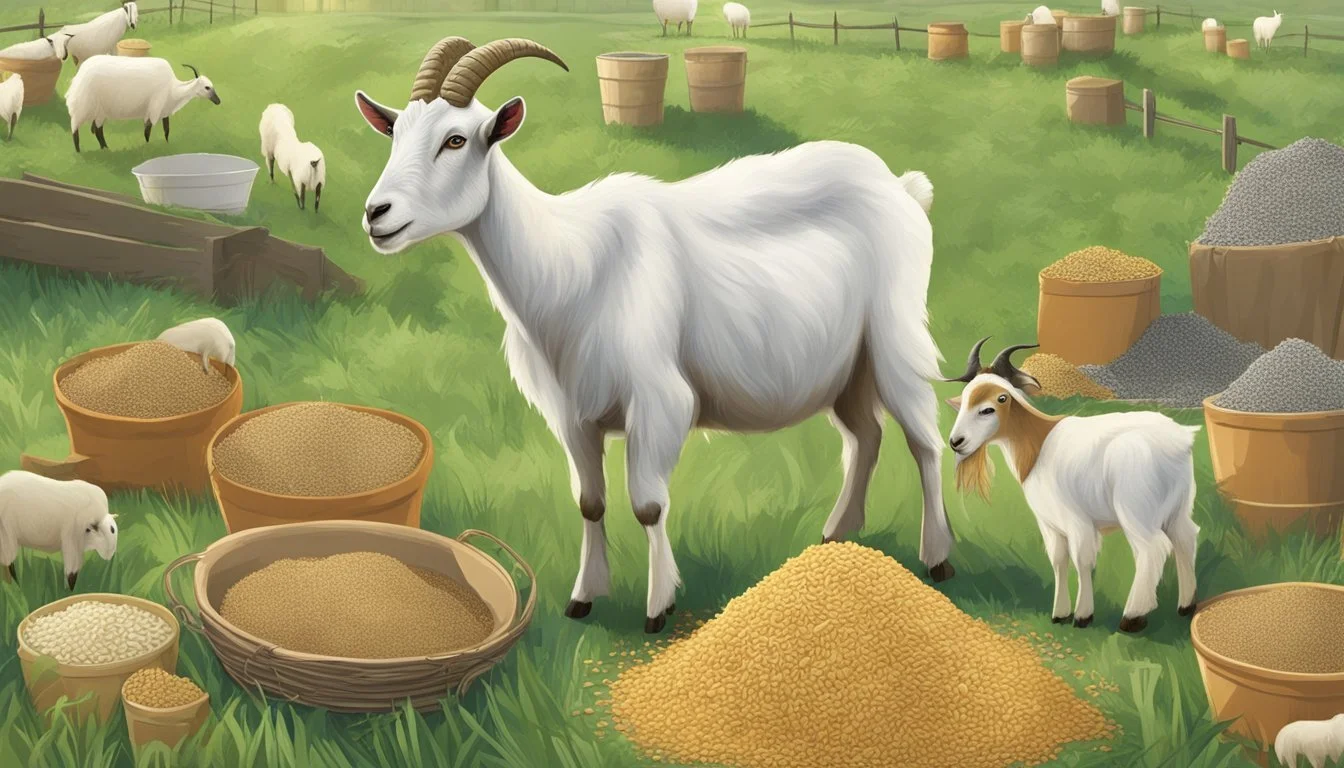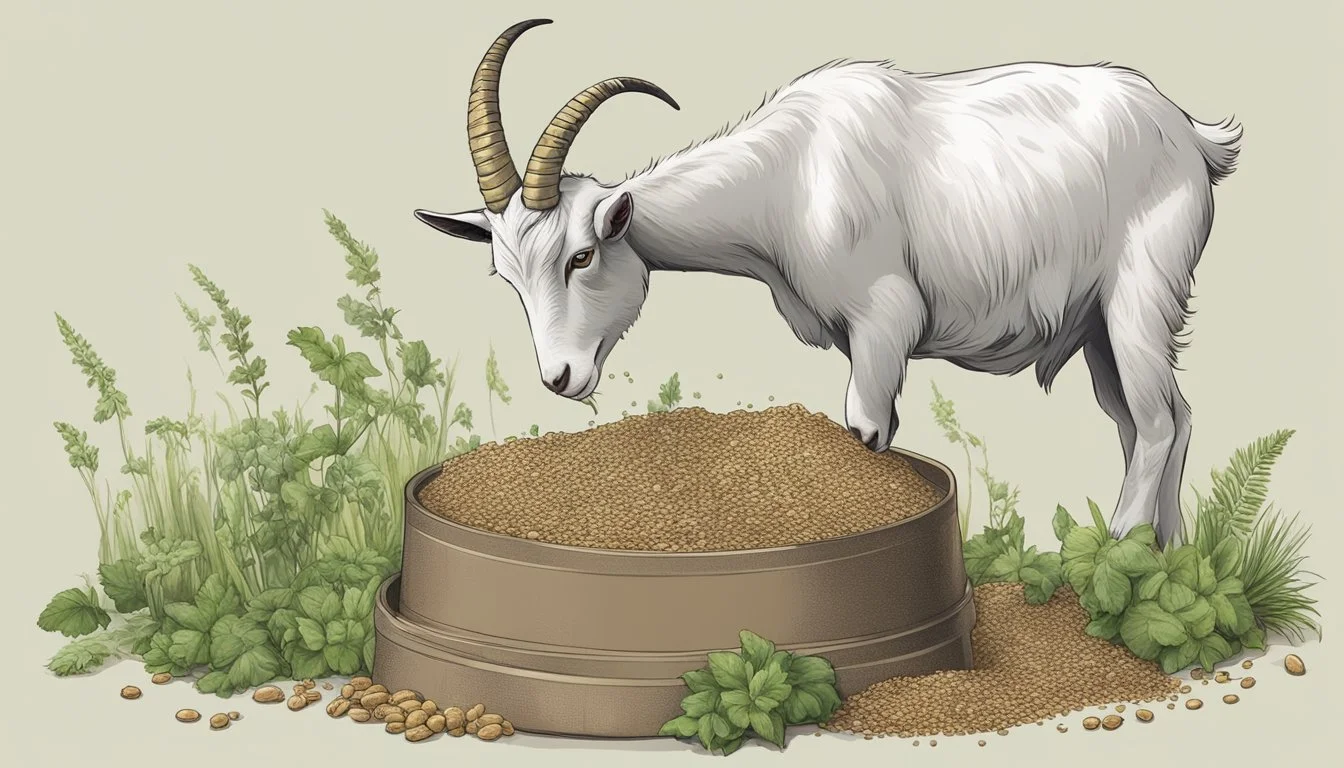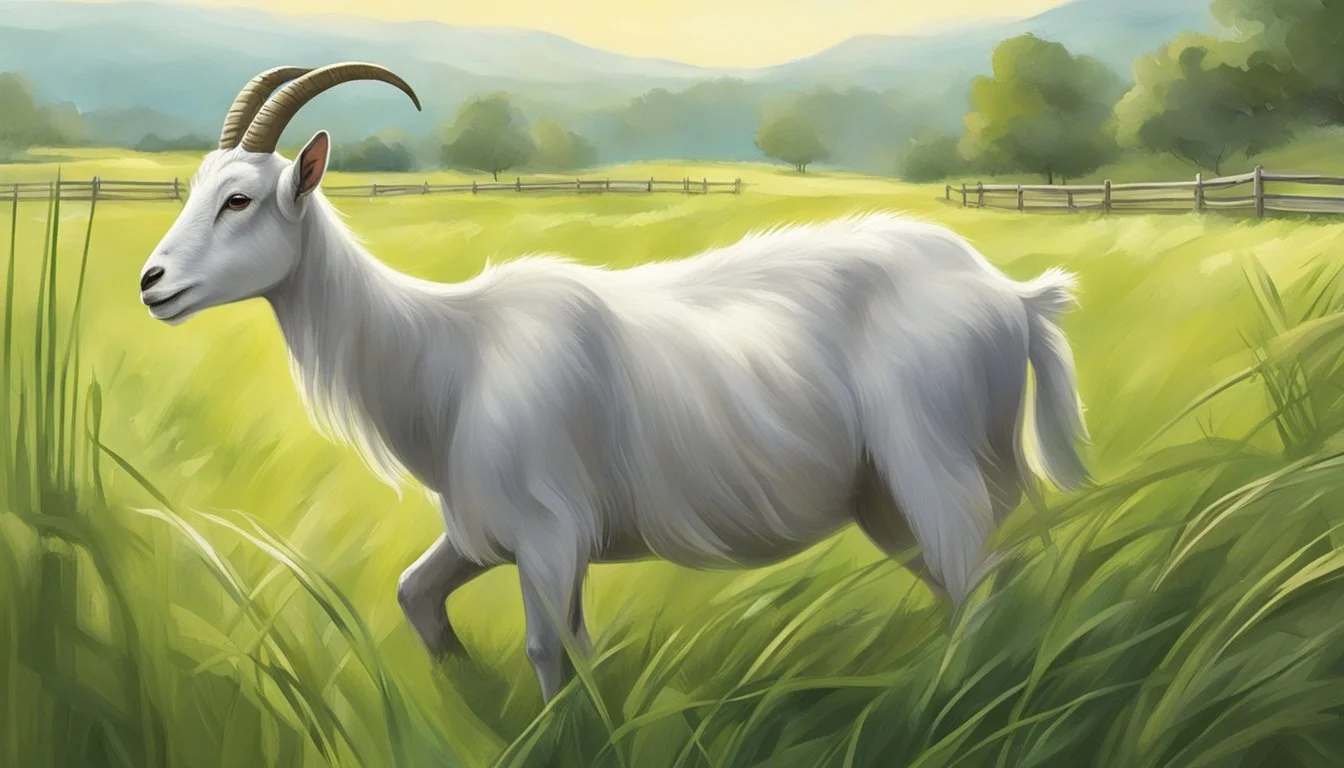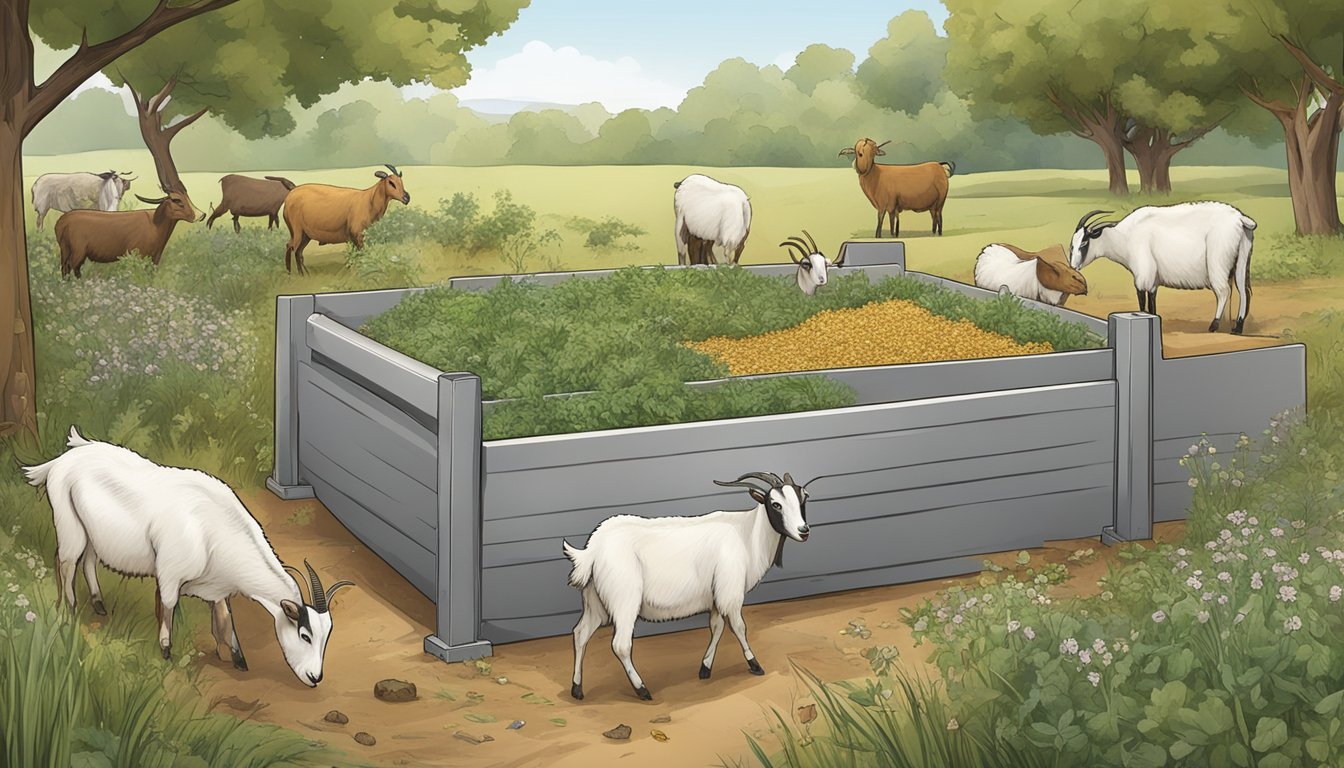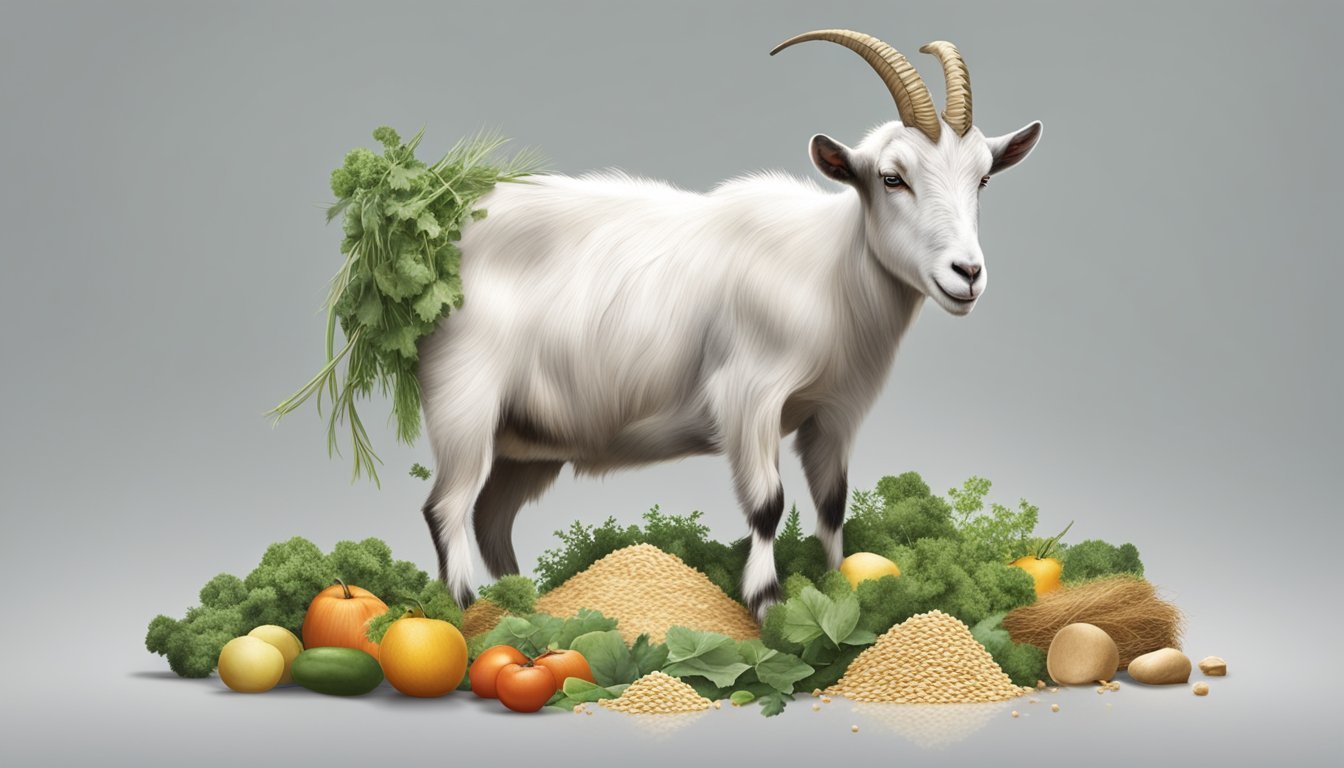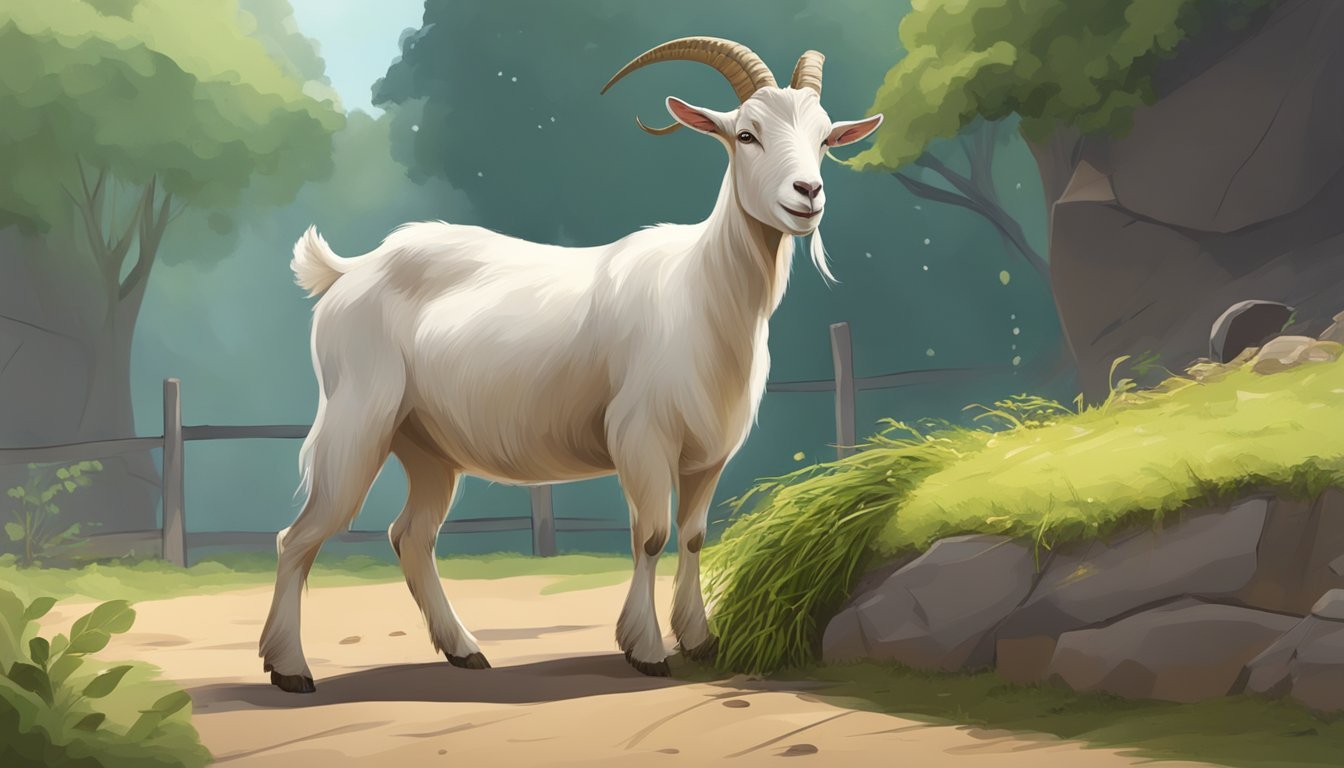How Do I Manage a Goat's Diet
Key Strategies to Prevent Obesity
Managing a goat's diet is crucial in preventing obesity, a condition that can lead to serious health complications in goats. Obesity in goats is often the result of an imbalance between energy intake and expenditure. Goats require a diet that provides them with the necessary nutrients while maintaining their ideal weight. A balanced diet for goats typically consists of a combination of roughage, such as hay or pasture, and concentrates like grains, which are higher in energy.
It's important to understand the nutritional needs of goats at various stages of their lifecycle. Lactating does, growing kids, and bucks have different dietary requirements than non-lactating or inactive adult goats. Providing goats with the correct ratio of roughage to concentrates prevents overconsumption of energy-rich foods. Roughage should form the majority of the diet, with concentrates offered in controlled amounts to meet the additional energy demands.
To ensure goats do not develop obesity, their diet should be monitored and adjusted as necessary. Frequent weight checks and body condition scoring can help keep track of a goat's health and weight status. It is also important to provide goats with adequate vitamins and minerals to support their overall health and to avoid excessive treats that can contribute to unnecessary weight gain. Regular exercise through grazing and browsing can also help maintain a healthy weight.
Understanding Goat Nutrition
To manage a goat's diet effectively, it's important to understand the intricacies of their nutritional requirements and the uniqueness of their digestive system. Balancing essential nutrients and accounting for various factors that influence their dietary needs is crucial to prevent obesity and maintain overall health.
Nutrients Essential for Goats
Goats require a balanced diet that includes a range of nutrients such as proteins, energy, and fiber. Proteins are vital for growth and repair of tissues, while energy, primarily derived from carbohydrates and fats, fuels all bodily functions. Fibers are essential for proper digestive function. Goats also need adequate minerals like calcium and phosphorus for bone development, potassium for muscle and nerve function, magnesium for enzyme activation, and selenium and iodine, which are critical trace minerals. Vitamins play various roles, from vision (Vitamin A) to blood clotting (Vitamin K).
Dietary crude protein intake should be balanced as both deficiencies and excesses can lead to health issues. The required nutritional requirements of goats can vary based on factors such as age, production stage (e.g., lactation), and activity level.
The Goat Digestive System
Goats are classified as ruminants, meaning they have a complex digestive system that is efficient in extracting nutrients from plant-based food. The four-chambered stomach consists of the rumen, reticulum, omasum, and abomasum. The rumen plays a crucial role in fiber digestion through microbial fermentation, which helps synthesize volatile fatty acids and other nutrients. Understanding this digestive process is key to ensuring goats have a diet that their system can handle, thus preventing issues like obesity.
Factors Affecting Nutritional Needs
Several factors influence the nutritional needs of goats. Young, growing goats have higher requirements for proteins and energy to support their development. Lactating does need increased energy and protein, especially dietary crude protein, to produce milk. Pregnant does in their last trimester require an upsurge in nutrients to support fetal growth.
Environmental conditions can also affect nutritional needs, where goats in colder climates might require more energy to maintain their body temperature. Stress factors, such as changes in environment or poor health, can increase nutritional demands. Understanding these factors helps in tailoring diets that prevent overnutrition or undernutrition, both of which can lead to obesity or other health issues in goats.
Assessing Feed Quality and Diet
Managing a goat's diet to prevent obesity begins with understanding and assessing the quality of feed provided to them. This includes analyzing the types of forage available, the impact of grazing and browsing behaviors, and the role of supplemental feeds and concentrates. Identifying which foods offer the most nutritional value is critical to a balanced diet.
Types of Goat Forage
Goats forage on a variety of plant materials which include fresh grass, alfalfa, hay, and straw. Different types of forage provide varying levels of nutrients. For example, legumes like alfalfa are higher in protein and energy compared to grasses. Roughage is essential for proper digestion, and goats should have access to adequate forage to prevent overconsumption of richer feeds.
Benefits of Grazing and Browsing
Goats are natural browsers and prefer a diet that allows them to graze and browse a diverse range of vegetation. Grazing on pastures can contribute to a healthy diet by offering a mix of grasses and legumes. Browsing helps to vary their intake and provides essential nutrients that will prevent dietary imbalances and obesity.
Supplemental Feeds and Concentrates
While forages should be the cornerstone of a goat's diet, supplemental feeds and concentrates may be necessary, especially for goats in production or with higher nutritional needs. Grains such as oats, corn, or barley can be offered, but in controlled amounts to prevent excessive weight gain. They are energy-dense and should be balanced with roughage to maintain a healthy weight.
Identifying Nutritious Foods
Determining what constitutes healthy food options for goats involves evaluating both fresh and dried offerings. Foods should be free of mold and toxins, as these can impact health and productivity. A balance between cereal grains and fiber is vital, with an emphasis on ensuring that the goats get most of their nutrients from high-quality forage.
Managing Diet for Different Life Stages
Goats have distinct nutritional needs at various life stages, and managing their diet effectively is crucial to prevent obesity and ensure proper growth, lactation, and reproduction. The appropriate balance of nutrients, while monitoring feed intake, will support their health and productive longevity.
Feeding Kid Goats
Age: 0-6 months
Growth: Rapid
Colostrum: Immediately after birth, kids should receive colostrum within the first couple of hours to boost immunity.
Milk or replacer: Thereafter, a diet rich in milk or a high-quality milk replacer ensures proper development.
Introduction to solids: At around 2-4 weeks, begin introducing high-quality forage and a starter ration to encourage rumen development.
Weaning: Depending on growth and body condition, kids can be weaned from milk at 2-3 months of age.
Information about feeding strategies for kid goats can further be explored at Nutritional Feeding Management of Meat Goats.
Nutrition for Lactating Does and Bucks
Reproduction: Active
Lactation/Milk Production: High demand phase
Purpose: Dairy or breeding
Energy and Protein: Lactating does require an increased amount of energy and protein to sustain milk production.
Calcium and Phosphorus: A balanced calcium to phosphorus ratio, around 1.2-1.5:1, is essential to prevent urinary calculi and support milk production.
Ration Adjustments: Adjust feed based on milk yield, aiming to maintain optimal body condition without contributing to obesity.
Lactation and reproduction's influence on nutritional demands is elucidated at Nutrition of Goats.
Senior Goat Nutritional Management
Age: Older than 6 years
Body Condition: Prone to decline
Feed Intake: May decrease
Quality Forage: Offer easy-to-digest, high-quality forage to support a healthy weight.
Monitor Body Condition: Regularly evaluate their body condition and adjust their diet accordingly to avoid obesity.
Supplementation: Vitamin and mineral supplementation may be necessary to compensate for reduced feed intake and absorption inefficiency.
Guidance for managing elderly goat diets can be found within the article Goat Nutrition and Feeding.
Preventing and Addressing Health Issues
In managing a goat's diet, one must consider not only the nutritional needs but also how to prevent health issues such as obesity, which can lead to serious complications for the animal.
Obesity and Related Health Problems
Obesity in goats can predispose them to a myriad of health problems, including urinary calculi and joint stress. It is crucial to monitor a goat's body condition score regularly and adjust their diet to prevent excessive weight gain. Limiting high-calorie feeds and ensuring they have enough physical activity are fundamental steps in managing their weight.
Diet and Parasite Control
A well-balanced diet is essential, not only for maintaining a healthy weight but also for parasite control. Overcrowded grazing conditions can increase the risk of goats ingesting internal parasites, which thrive in animals with compromised health due to poor nutrition. Implementing a rotational grazing system and supplying a diet rich in nutrients can help strengthen a goat's natural defense against parasites.
Minimizing Toxicity Risks in Diet
It's imperative to be vigilant about the risk of toxicity and poisonous plants when considering a goat's diet. Goats are notorious for their inquisitive nature, which may lead them to consume harmful substances. Providing a diverse range of approved forages and routinely inspecting grazing areas for plants that might cause toxic reactions can aid in minimizing the risks.
Practical Feeding Strategies
To prevent obesity in goats, one must adopt a meticulous approach to their diet. Precision in feed intake and a strong understanding of nutritional content are central to this strategy.
Creating a Balanced Diet Plan
A balanced diet plan for goats includes a variety of forage, grains, and supplements to cover all nutritional needs. They should consume a diet that is rich in fiber, which is primarily provided by hay or pasture. Commercial goat feeds can supplement their diet, ensuring proper levels of protein, energy, vitamins, and minerals. For optimal health, include a balance of calcium and phosphorus and provide salt blocks for essential minerals and to prevent overeating of grains.
Measuring and Adjusting Feed Intake
To manage a goat's diet effectively, it is crucial to measure feed intake regularly. Adjustments may be needed based on the goat's weight, age, activity level, and reproductive status. Overfeeding can lead to obesity, while underfeeding can result in deficiencies. Observe the body condition frequently and modify the diet as necessary, offering grains in controlled quantities rather than on a free-choice basis to avoid excessive weight gain.
Importance of Water and Hydration
Goats require continuous access to fresh, clean water. It is essential for digestion and overall health. The water content in a goat's diet, especially when consuming fresh forage, contributes to their hydration status. In hotter climates or periods of high activity, goats may need more water. Ensuring proper hydration will help regulate feed intake and maintain a healthy weight.
Pasture and Environment Management
Effective management of a goat's diet to prevent obesity requires careful attention to both the quality of pasture and the impacts of the environment on feed availability. This involves strategies to improve forage and mitigate environmental factors that affect nutritional intake.
Improving Pasture Quality
It's essential to provide goats with a well-maintained pasture, offering a range of forages to meet their nutritional needs while avoiding overgrazing. Implementing a rotational grazing system ensures pastures have adequate rest periods, promoting regrowth and preventing erosion. Pasture management entails testing soil, fertilizing appropriately, and reseeding as needed to maintain a high forage yield. Watch for signs of grass tetany, a concern in lush growth periods, by providing mineral supplements, especially magnesium.
Environmental Impacts on Feed
Environmental factors like temperature, rainfall, and sunlight directly influence a goat's diet by affecting forage availability and quality. Providing adequate shade in the pasture can protect goats from heat stress, which can lead to decreased feed intake and thus help in maintaining a healthy weight. Sustainable pasture management practices should consider the long-term health of the environment, ensuring that grazing does not lead to land degradation or loss of biodiversity.
Innovative Practices and Research
To effectively manage a goat's diet and prevent obesity, it is imperative to embrace the latest findings and methodologies in goat nutrition. These practices are grounded in scientific research and are geared towards improving the health and productivity of dairy goats.
Recent Advances in Goat Nutrition
Recent studies have indicated that monitoring milk urea nitrogen (MUN) levels can be a valuable strategy in assessing and managing the diet composition of dairy goats, much like it is used in dairy cattle. This approach provides insights into the balance of energy and protein the goats are consuming, which can directly influence their immune system and overall health. For instance, one can examine the effects of dietary fat and oil supplementation on milk yield, which has shown more significant benefits in early lactation stages.
Research into the feeding practices for lactating goats has shed light on the necessity to tailor dietary approaches to different life stages. This tailoring ensures that the nutritional requirements are met without leading to overnutrition and subsequent obesity. Addressing nutritional needs is critical to ensure goats maintain optimal weight throughout various physiological states, thereby supporting sustained production and a robust immune system. An example of this nuanced approach can be witnessed in the strategies devised to prevent conditions such as hepatic steatosis, as highlighted in a study outlining how goat's milk intake might prevent obesity and related metabolic disorders.
In summary, drawing on the latest research in goat nutrition is crucial in managing their diet to prevent obesity. Understanding and implementing these innovative feeding strategies can lead to healthier dairy goats with effective immune systems and the sustainable high yield production of goat milk.
Supplementary Nutrition Information
Managing a goat's diet to avoid obesity relies on understanding the specific nutritional values on feed labels and dispelling common myths regarding their nutritional needs. Paying attention to factors like cellulose content, which affects rumen health and digestibility, is crucial.
Understanding Feed Labels
When selecting feed, one should look at the dry matter percentage, which indicates the amount of feed without the water content. Nutrition labels on goat feeds provide essential information, including crude protein, which should be at least 7% for proper rumen function, fiber content, which generally should exceed 50% for healthy digestion, and energy values. The digestibility of the feed is also an important aspect, as it affects how much of the feed's nutrients are available for the goat's body to utilize.
Common Myths in Goat Nutrition
There are several myths in goat nutrition that can lead to improper feeding practices. One misconception is that goats require substantial grain in their diets; however, they can maintain good health on a diet primarily composed of pasture and hay. Moreover, too much grain can disrupt the delicate balance in the rumen and lead to obesity. Another myth is that goats can digest anything, but they have specific dietary needs that must be met to prevent health issues, such as obesity.
Additional Feeding Considerations
Managing a goat's diet to prevent obesity involves nuanced decisions beyond just limiting portion size. They require a careful balance of nutrients tailored to their unique digestive systems with four stomachs and specific health needs.
Exploring Alternative Feed Options
Goats benefit from a varied diet that includes more than just the basics of grass hay and grains. Alternative feed options like beet pulp offer a high-fiber, low-calorie ingredient that can help manage weight without sacrificing the feeling of fullness. Beet pulp should be leached to reduce excess sugar. Adding fruits such as apples and peaches or vegetables like carrots, celery, and lettuce can provide nutritional variety. However, these should be given in moderation due to their higher sugar and carbohydrate content, which can contribute to weight gain if overfed.
Seasonal Adjustments in Diet
Fed year-round, grass hay serves as the staple of a goat's diet, offering necessary fiber and preventing obesity. However, during colder months, an increase in caloric intake is often necessary. In contrast, alfalfa hay, which is higher in calories and protein, can result in overweight goats if provided inaccessibly. Instead, it should be used strategically during periods of high nutritional need such as lactation or late pregnancy. Seasonal plants like thistle can be integrated as they naturally appear in the goat’s environment, but beware of poison ivy, which they can eat but might choke on or spread to humans on their fur.
Monitoring and Adjusting Based on Health
Continuous monitoring of the herd's health allows for diet adjustments proactively. Loose minerals play a crucial role in preventing deficiencies and conditions like arthritis. If health problems do appear, such as digestive problems indicative of obesity, the diet should be evaluated immediately. Less well-known feed additives such as molasses can act as a palatable medicine delivery method but should be used sparingly due to high sugar content. Kale, high in nutrients can be beneficial but also contains compounds that can be toxic in large quantities. The key is a well-balanced diet that provides adequate nutrition without excess calories.
Conclusion
Managing a goat's diet is critical to prevent obesity and related health issues. Those responsible for their care must have knowledge of the goat's nutritional requirements and employ sustainable practices. Incorporating a balanced mix of browse and high-quality forage, while moderating grain intake, establishes a healthy foundation for dietary management.
It is advisable to periodically weigh the animals and adjust their diets accordingly. They should also provide adequate minerals and clean water to support healthy physiological functions. To further enhance management practices, one could introduce regular physical activity, which can help regulate the goat's weight and improve overall health.
Incorporating fermented goat milk products into the diet may offer additional benefits in the prevention of obesity, as it has been found to increase energy expenditure and mitochondrial content in skeletal muscle, as well as reduce lipogenesis in the liver. Ongoing knowledge of advances in nutritional research helps to improve dietary protocols for these animals and ensure their health and productivity.
Ultimately, a thoughtful and informed approach to goat dietary management is a reflection of their caregiver's commitment to sustainable and healthy livestock practices.

